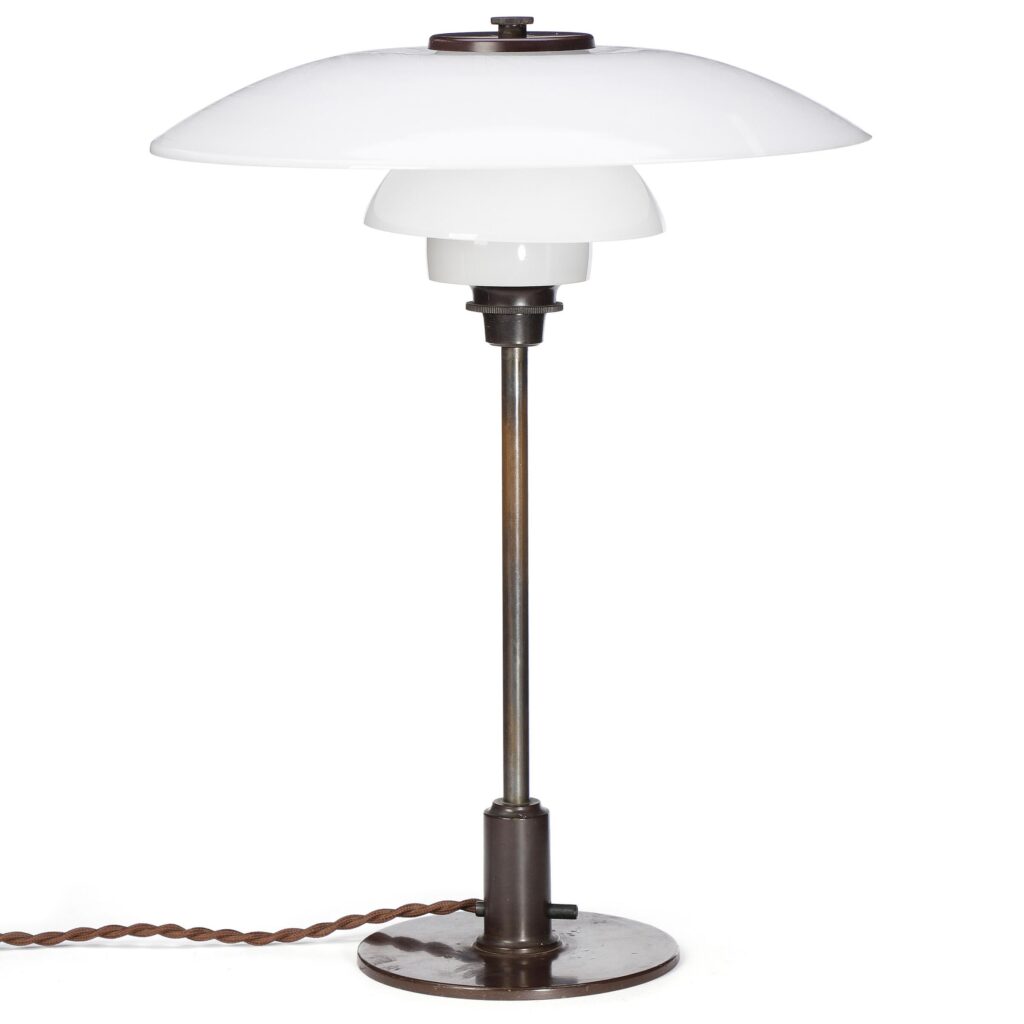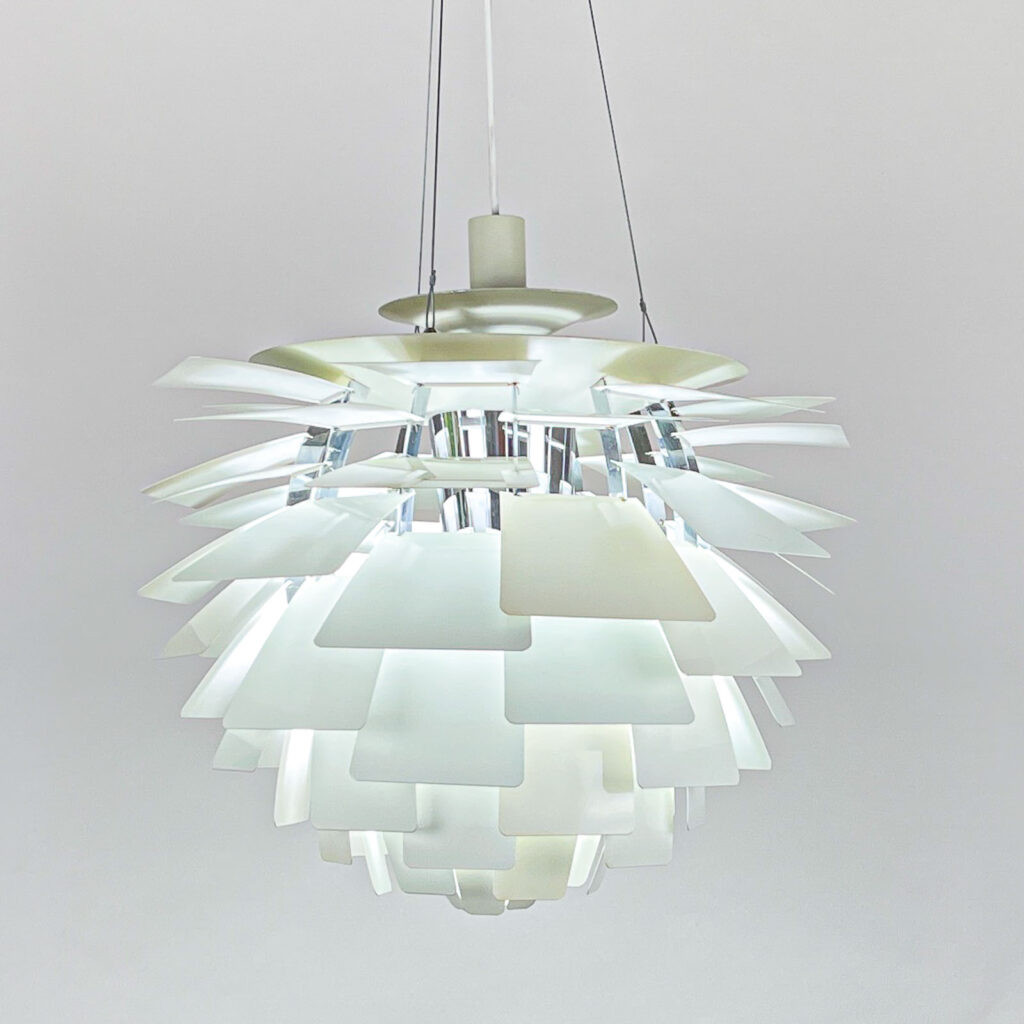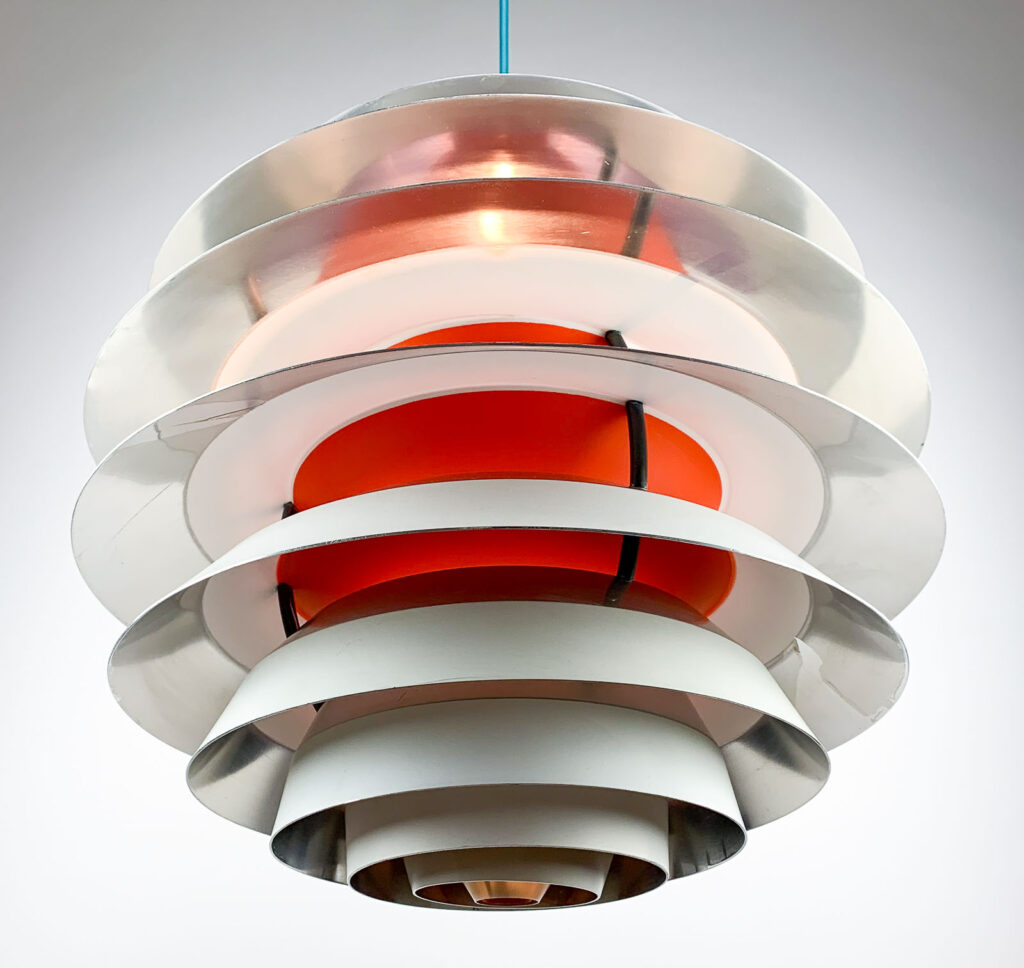Poul Henningsen – “PH 3½-2” table light – Louis Poulsen, Denmark ca. 1933
A browned brass and bakelite table light, model “PH 3½-2” with white opal-glass shades. Designed by Poul Henningsen in 1925. Made by Louis Poulsen circa 1933.
Price including VAT: SOLD
Poul Henningsen – “PH 3½-2” table light – Louis Poulsen, Denmark ca. 1933 Read More »




